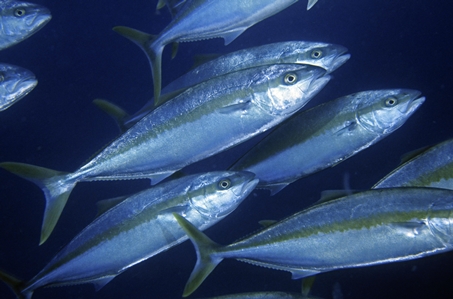General Description
Body compressed, elongate, oval, tail base slender; pectoral fins short, pointed; a low fleshy lateral keel on the tail base (keel poorly developed in adults). Dark blue above, silvery below with broad yellowish stripe on midside. To 2.5 m.
Biology
This species is found in large schools, especially around coastal reefs: adults usually occur around deep reefs and offshore islands, smaller fishes generally closer to coast. They feed on fish and squid, and are highly-prized by recreational anglers.
Habitat
Cool tropical to temperate waters, around rocky reefs; enters bays, ocngregating around channel markers and drop-offs, in depths of 0-50 m.
Reefs
Open water
Distribution guide
Southern Hemisphere and North Pacific. Australia.
Species Group
Fishes › Trevallies and allies
Depth
Shore (0-1 m)
Shallow (1-30 m)
Deep ( > 30 m)
Water Column
Max Size
2.5 m
Commercial Species
Yes
Global Dispersal
Recorded in Australia
Conservation Status
- DSE Advisory List : Not listed
- EPBC Act 1999 : Not listed
- IUCN Red List : Not listed





